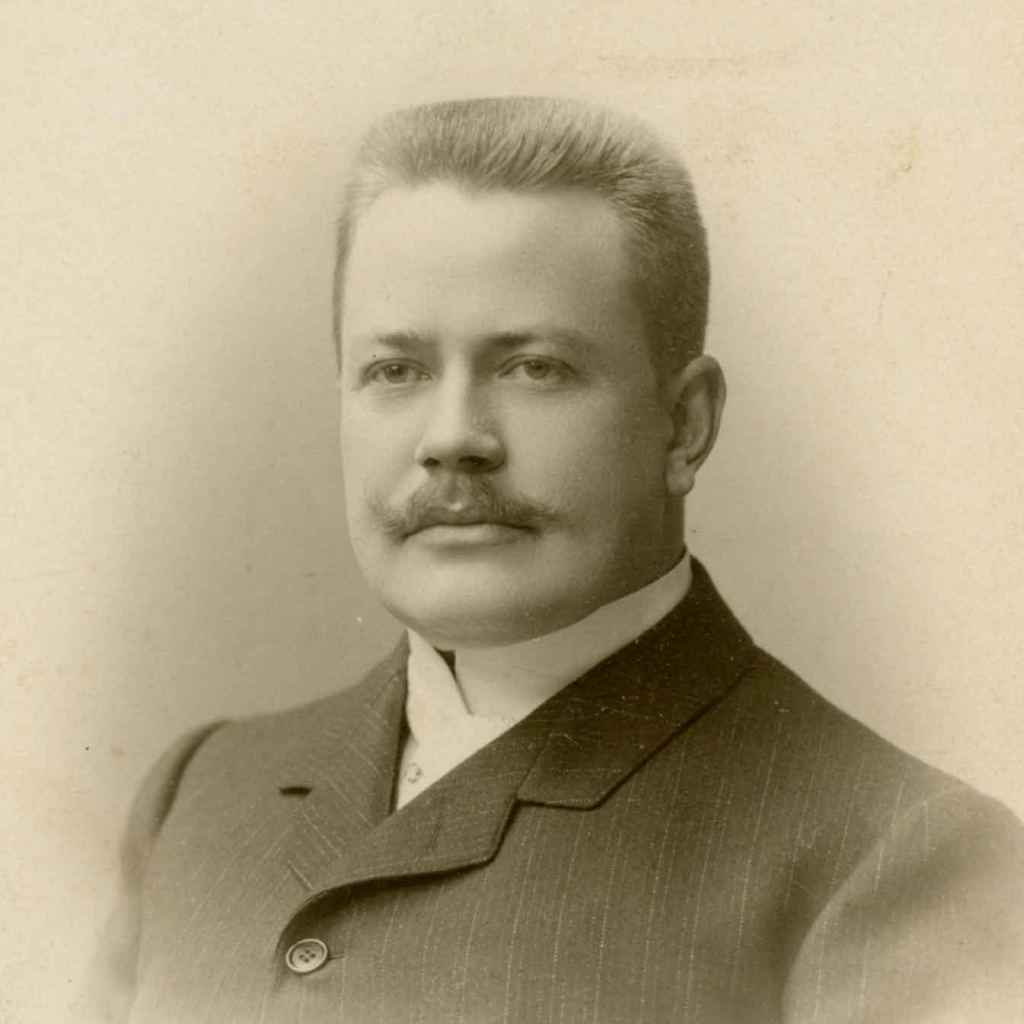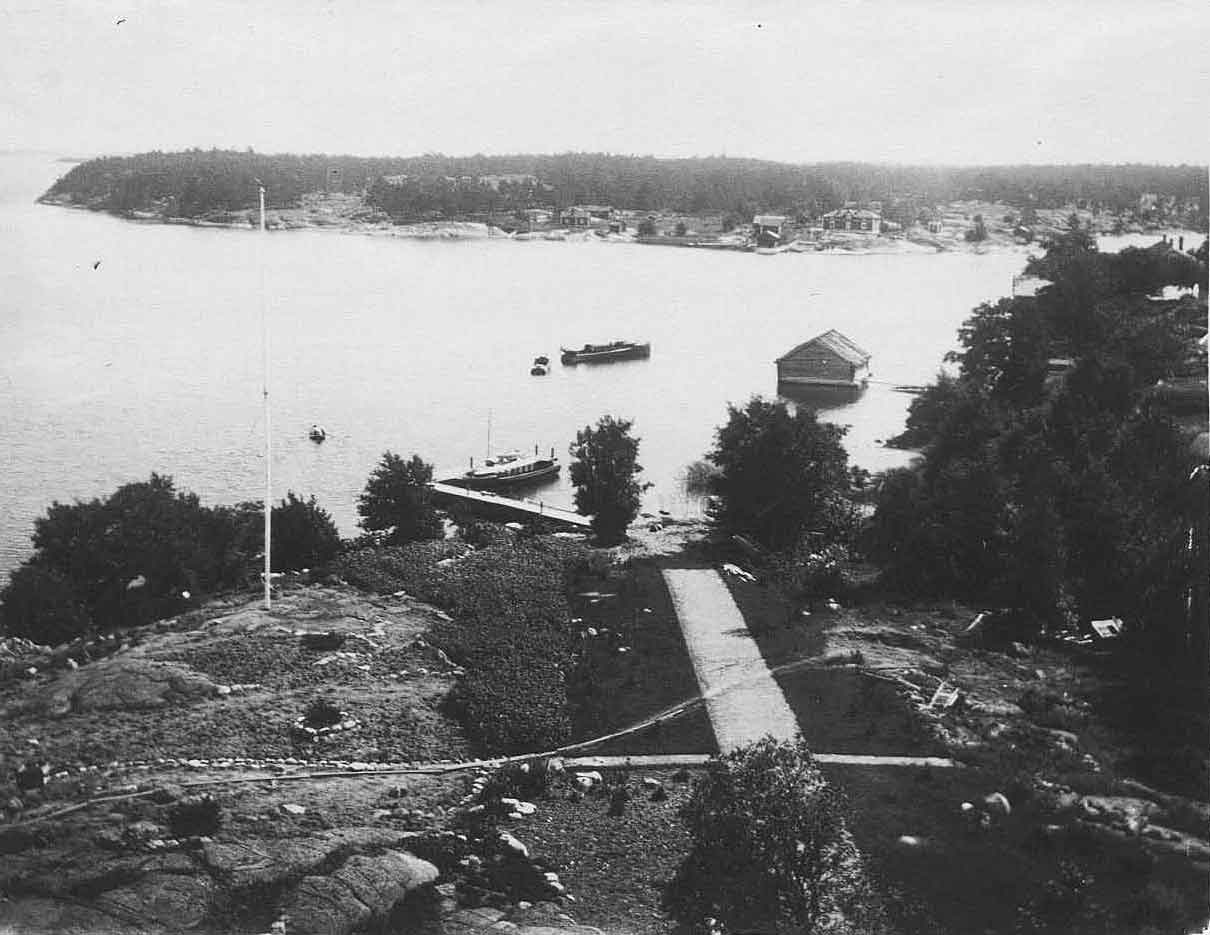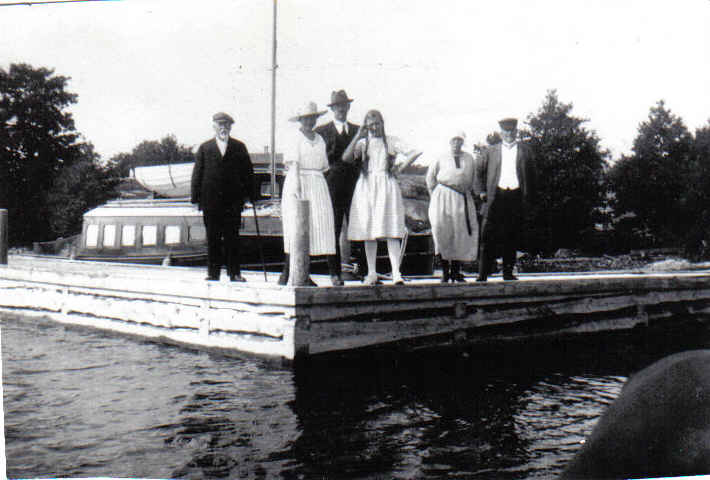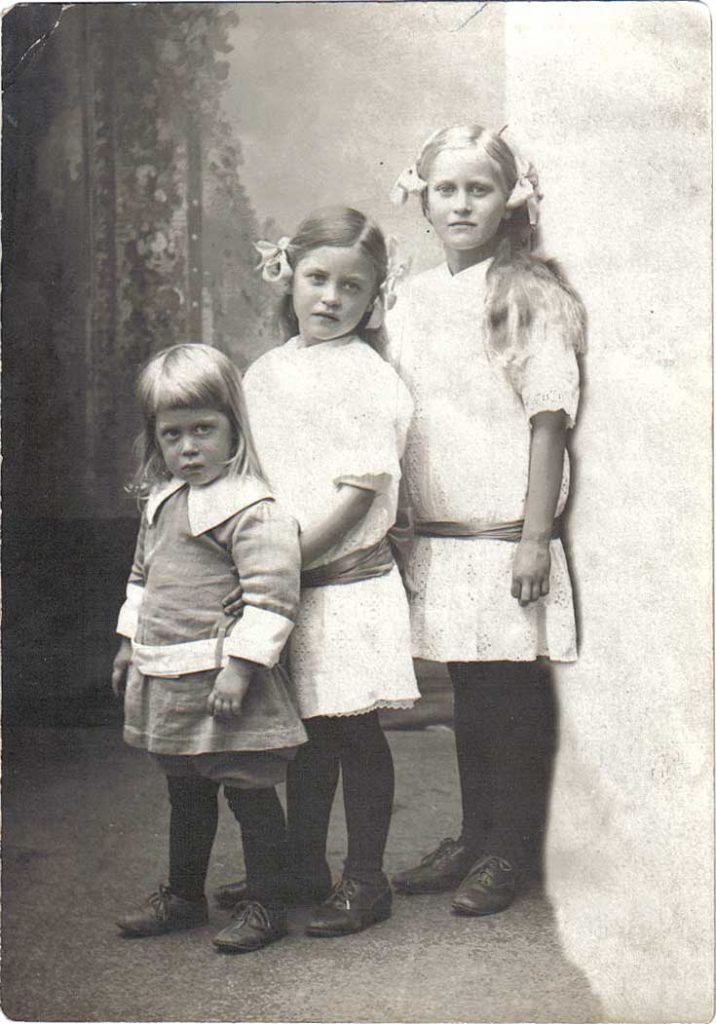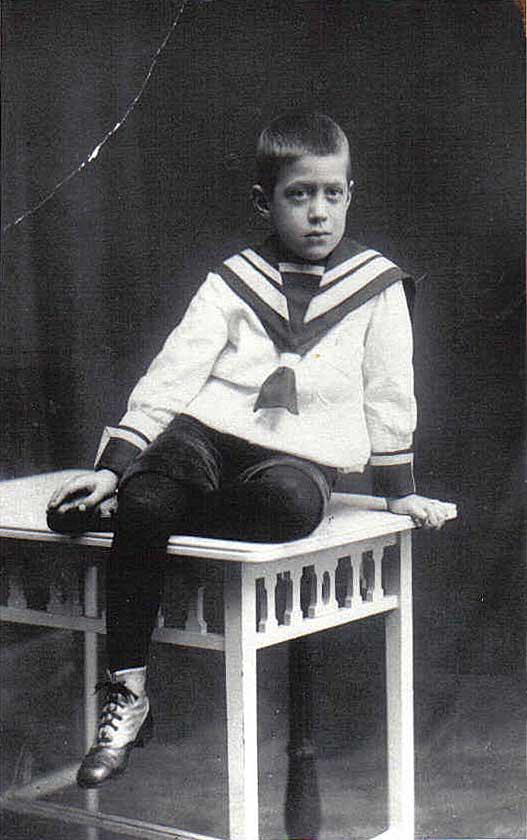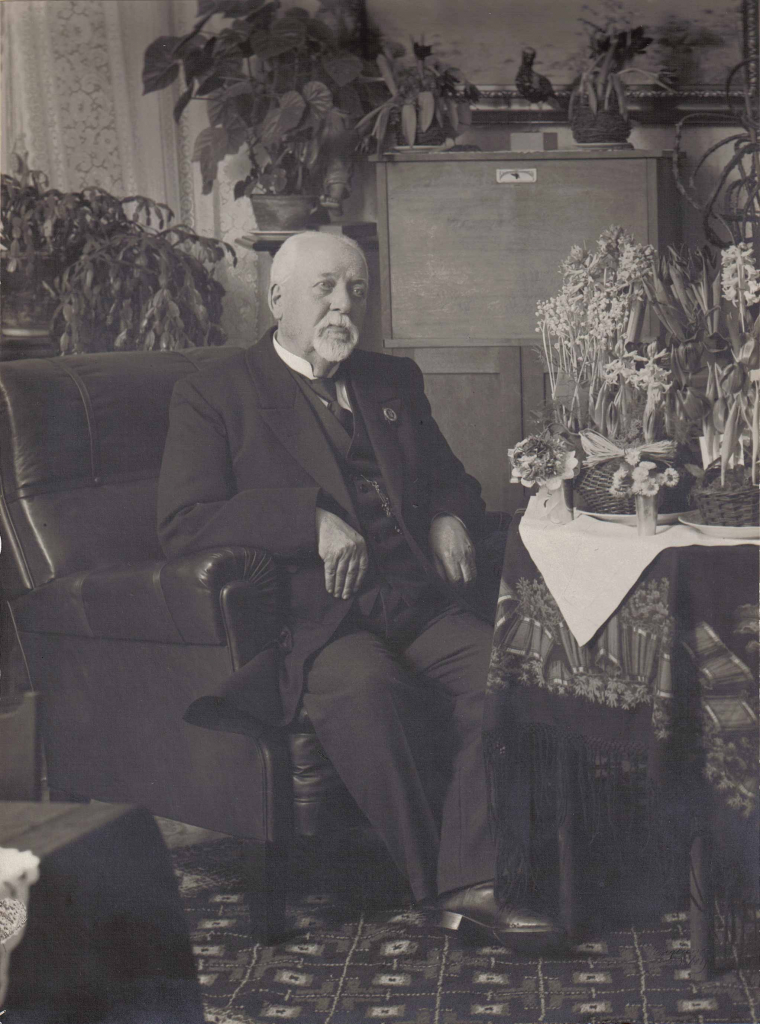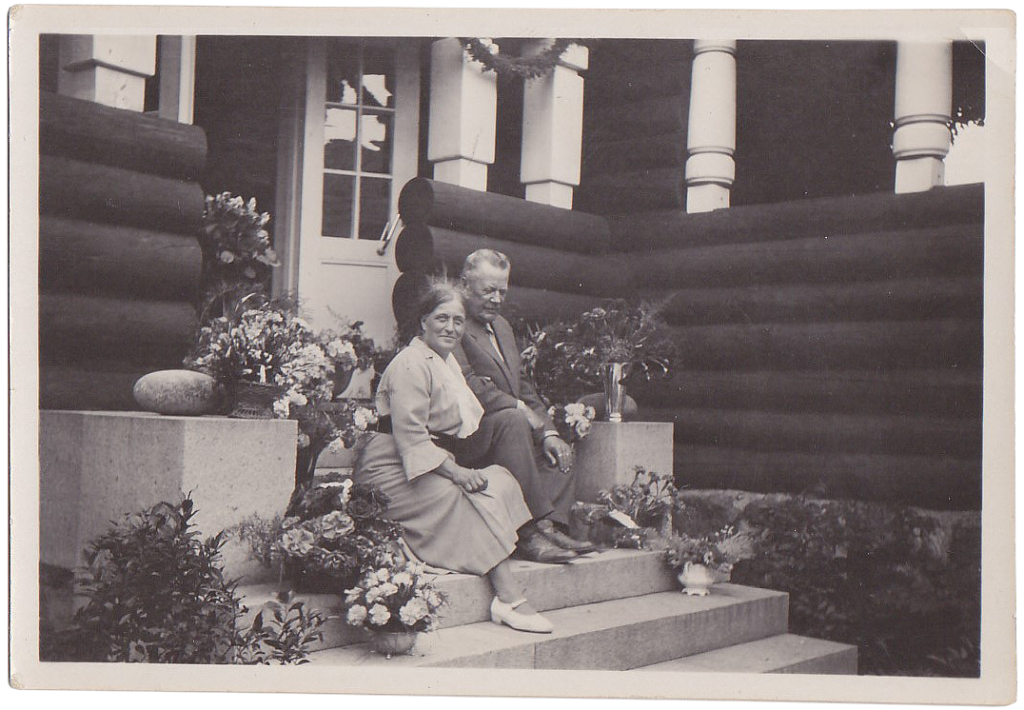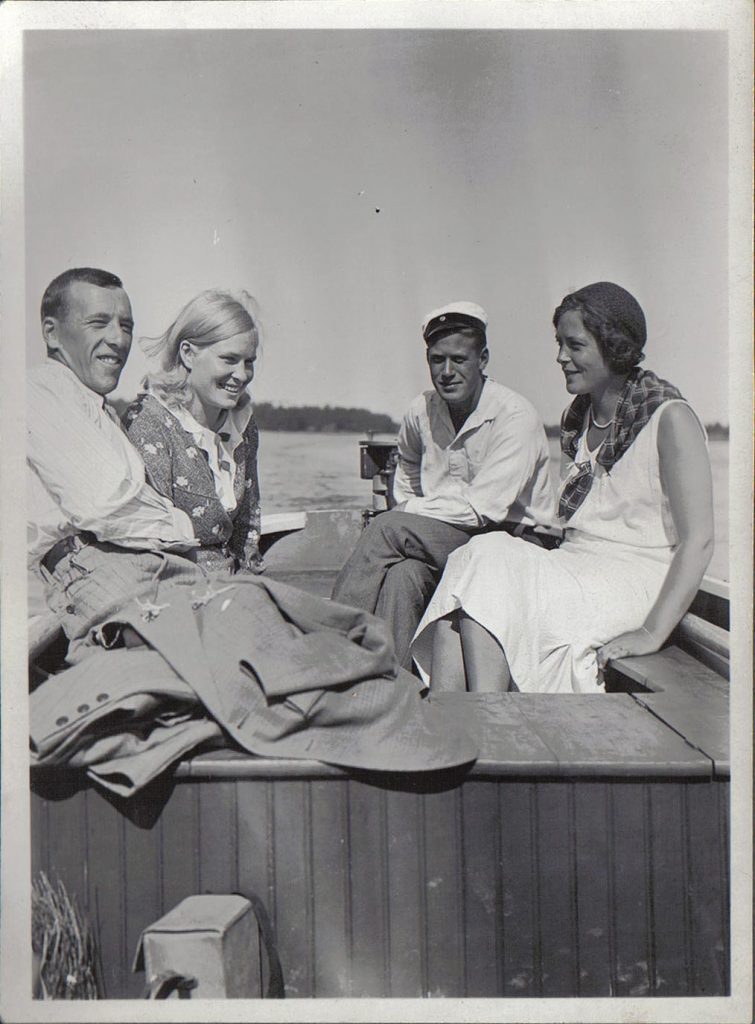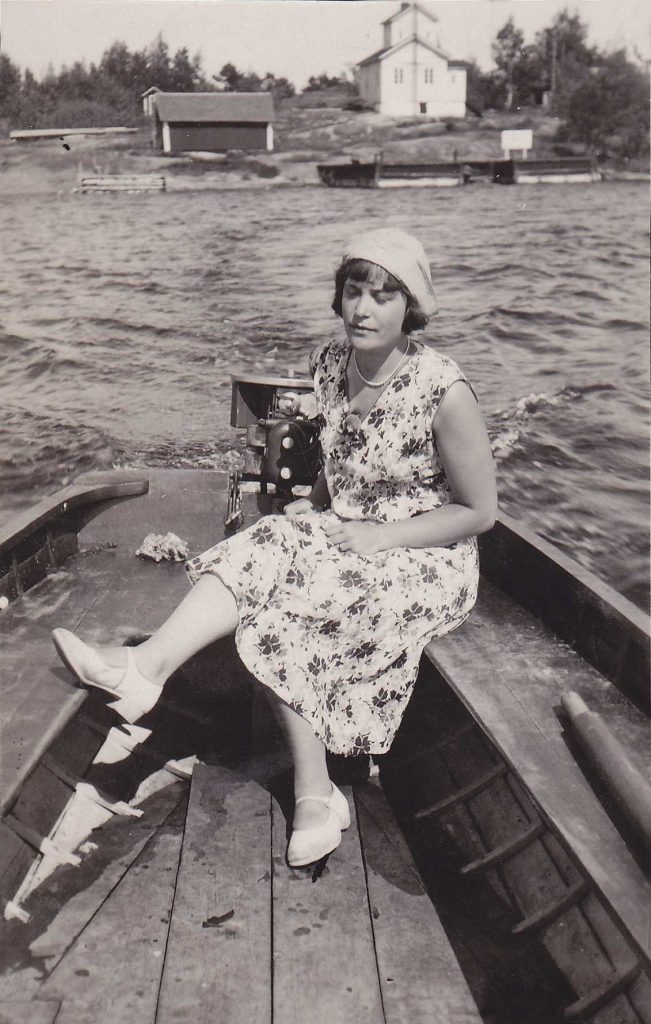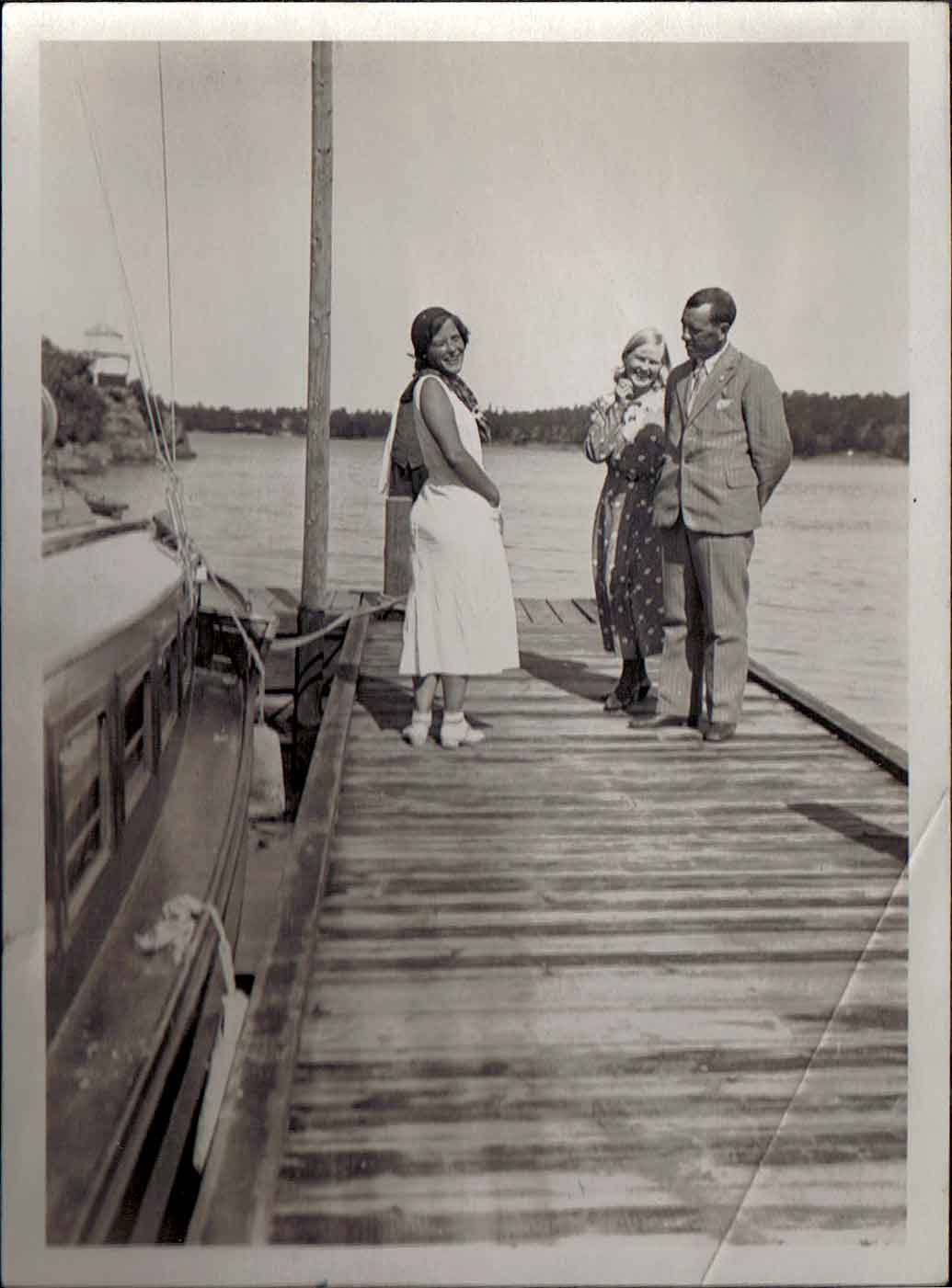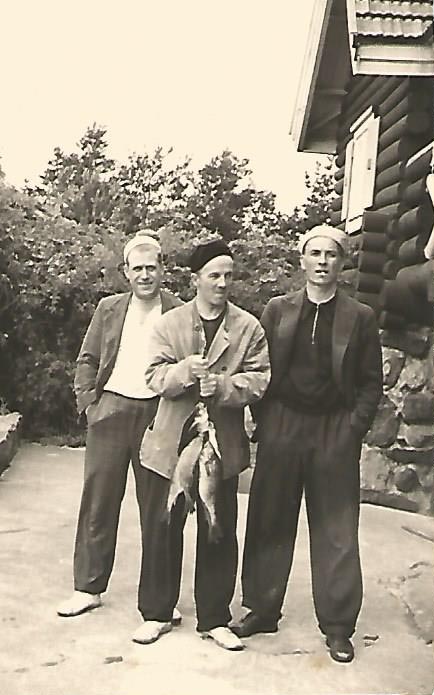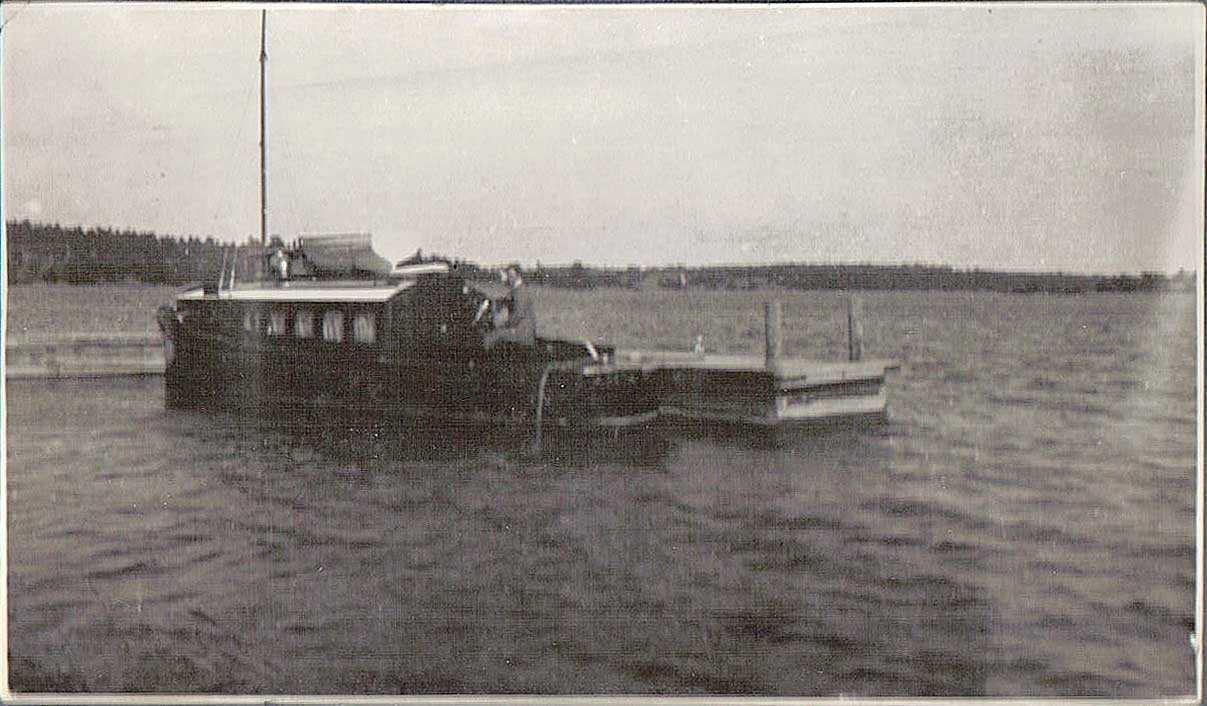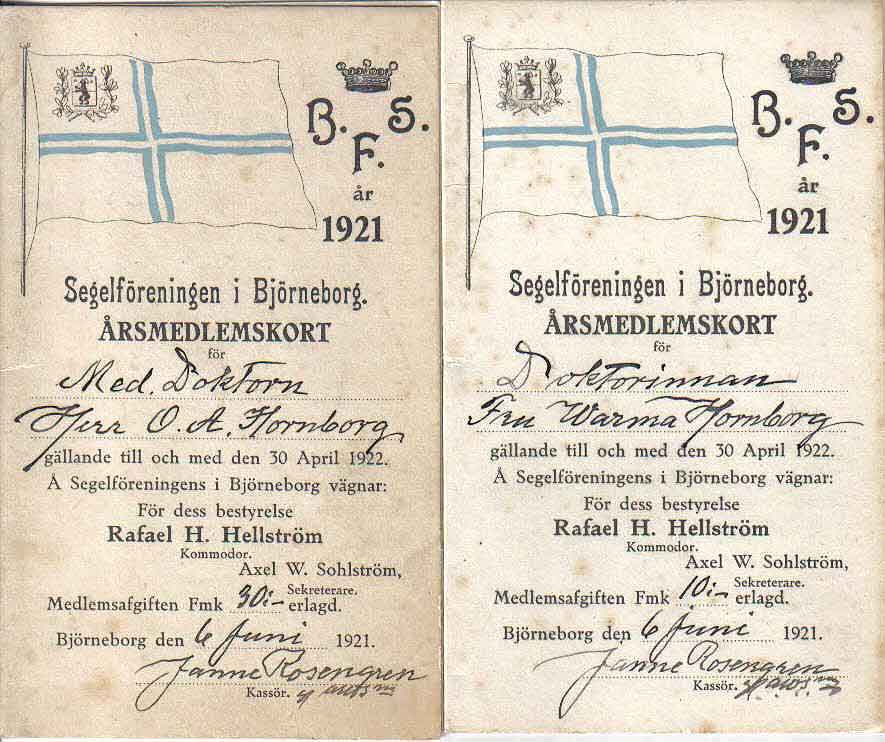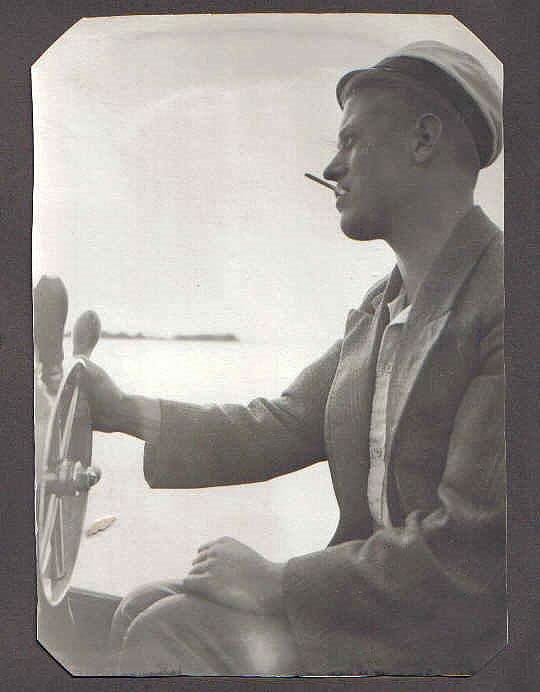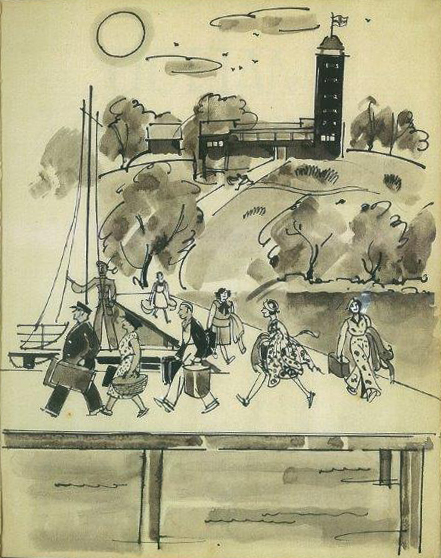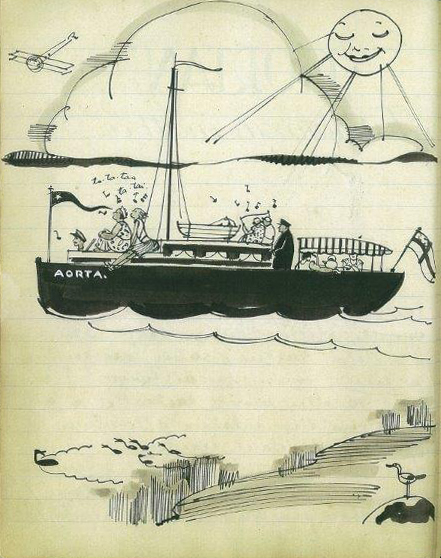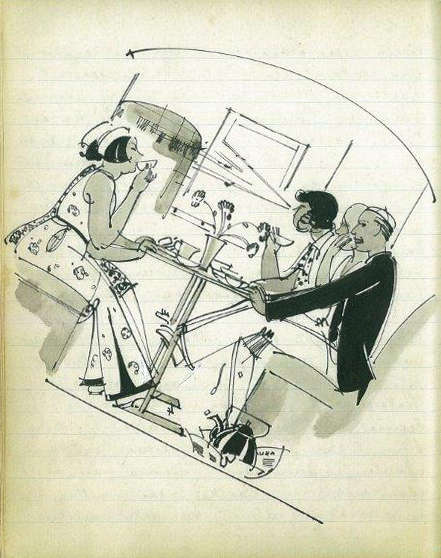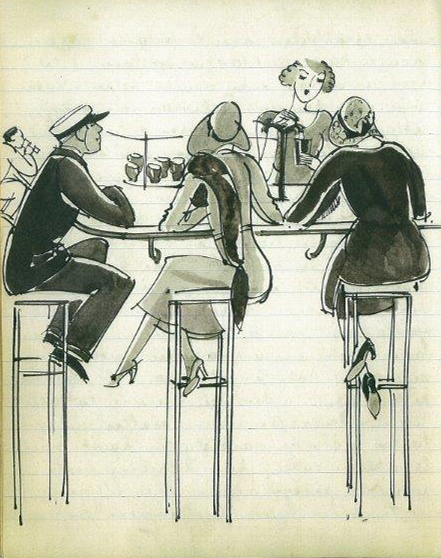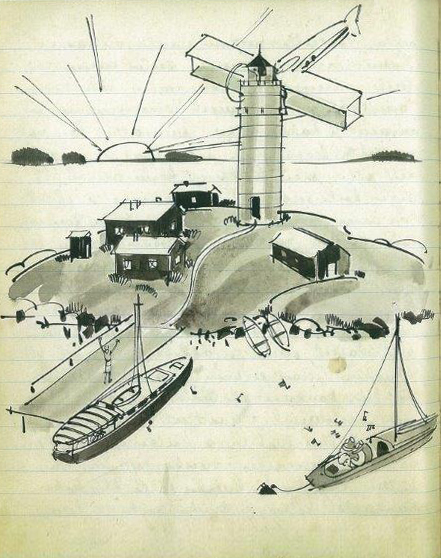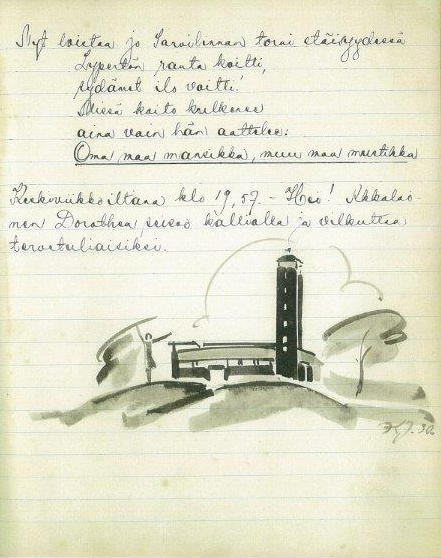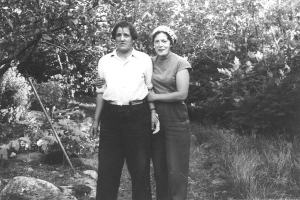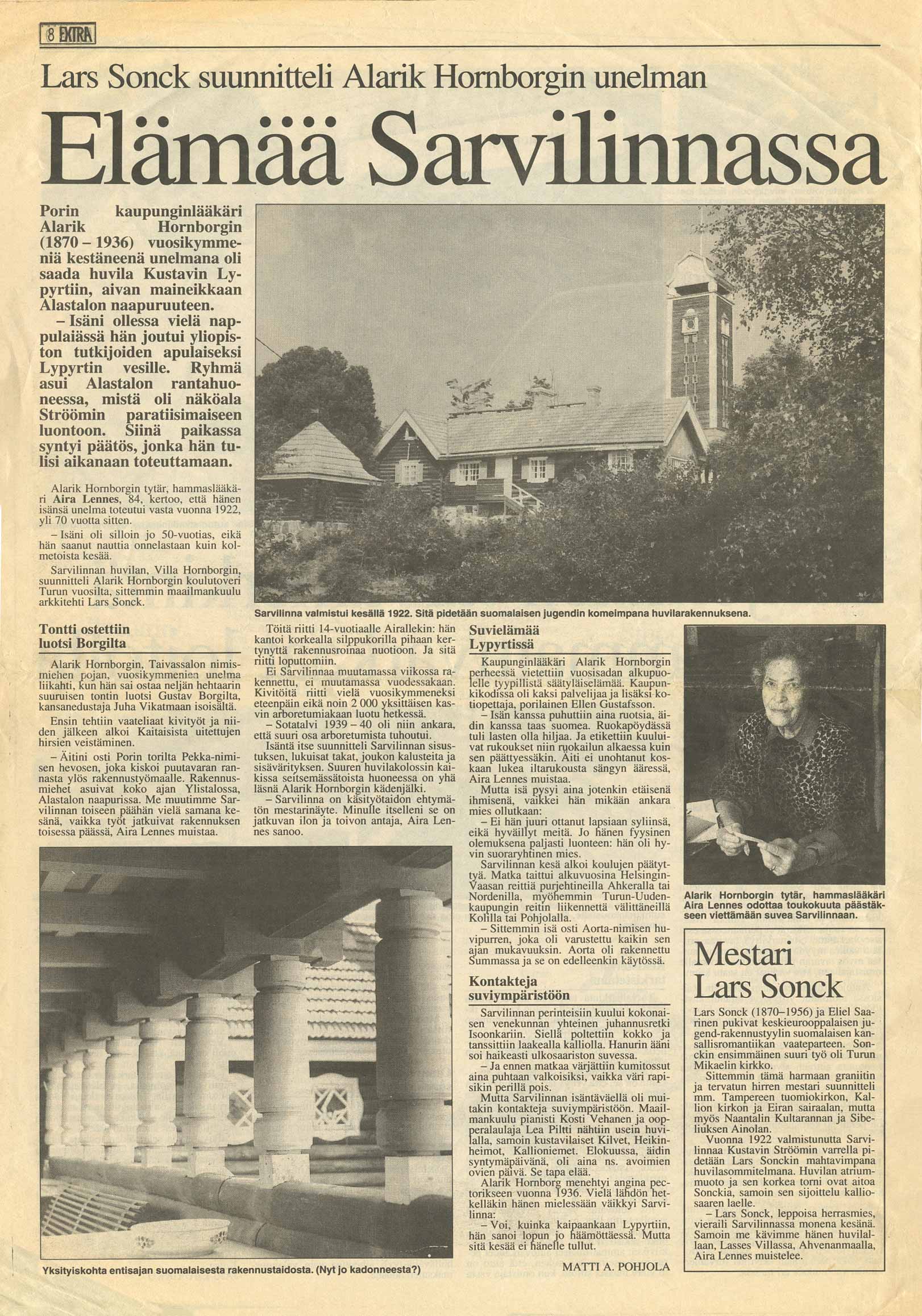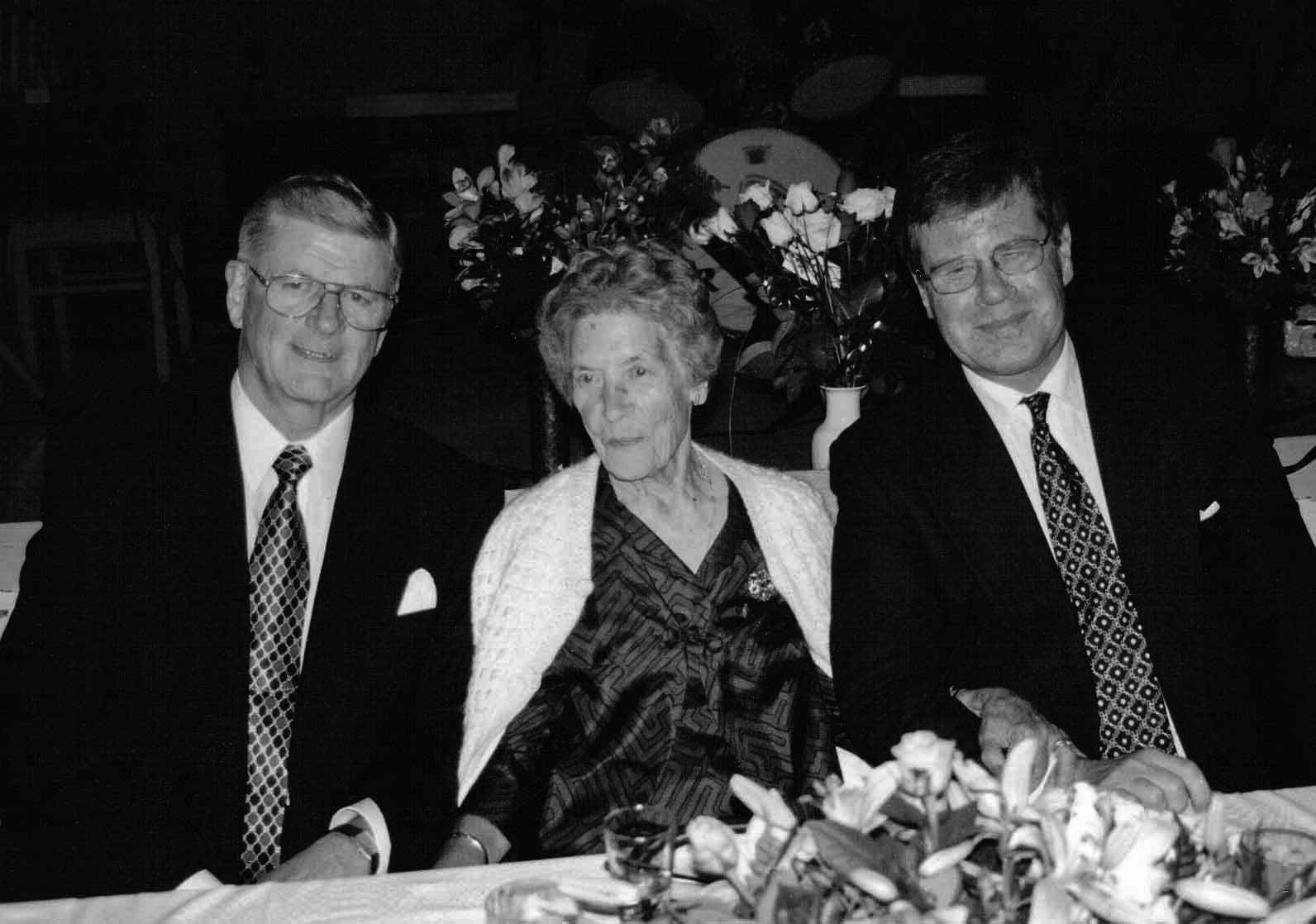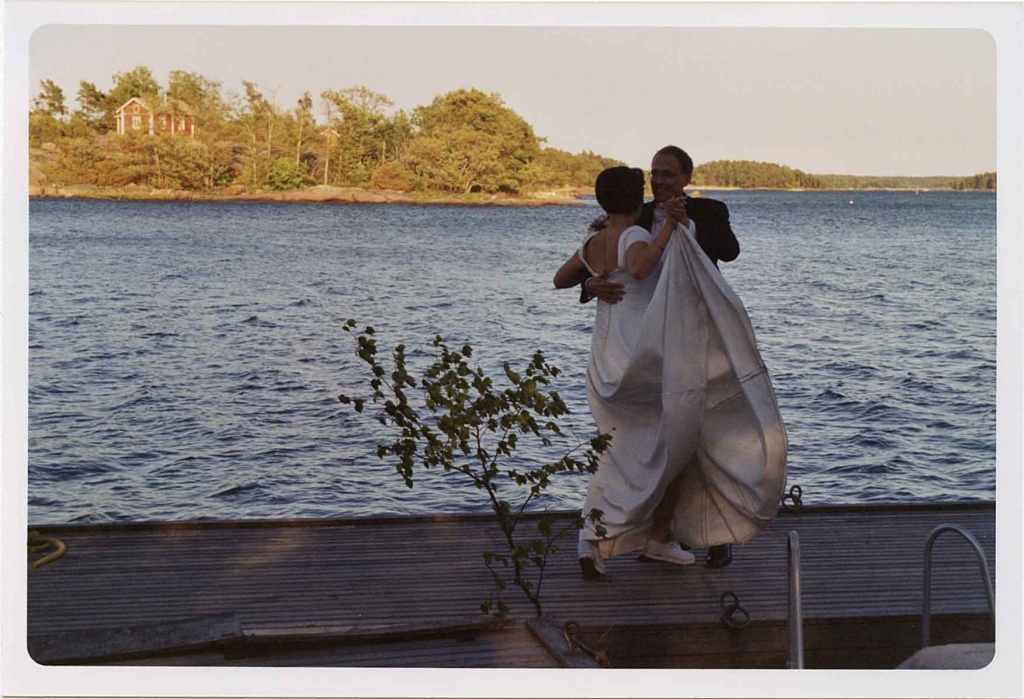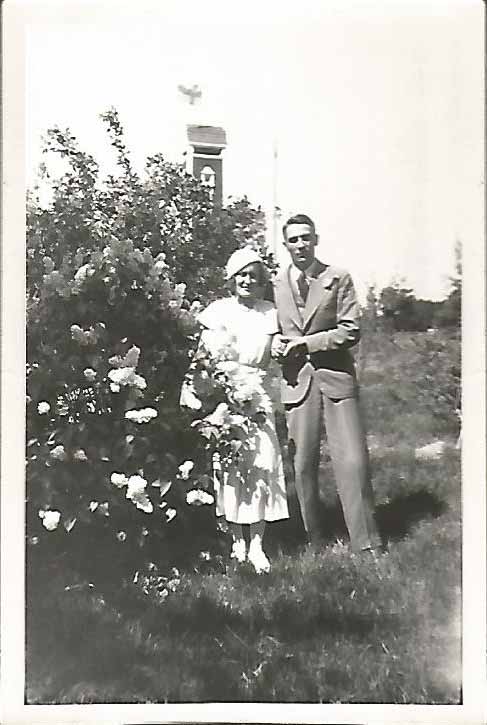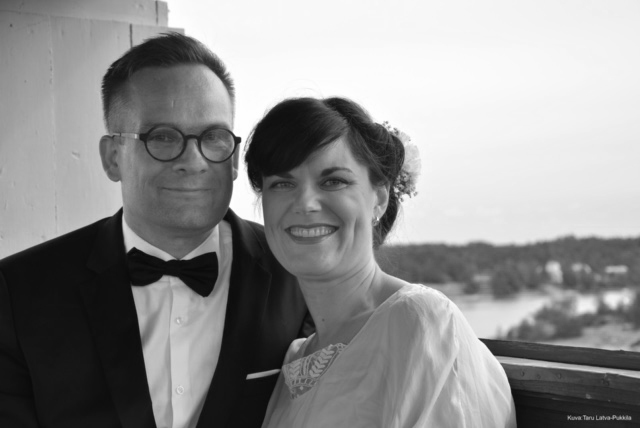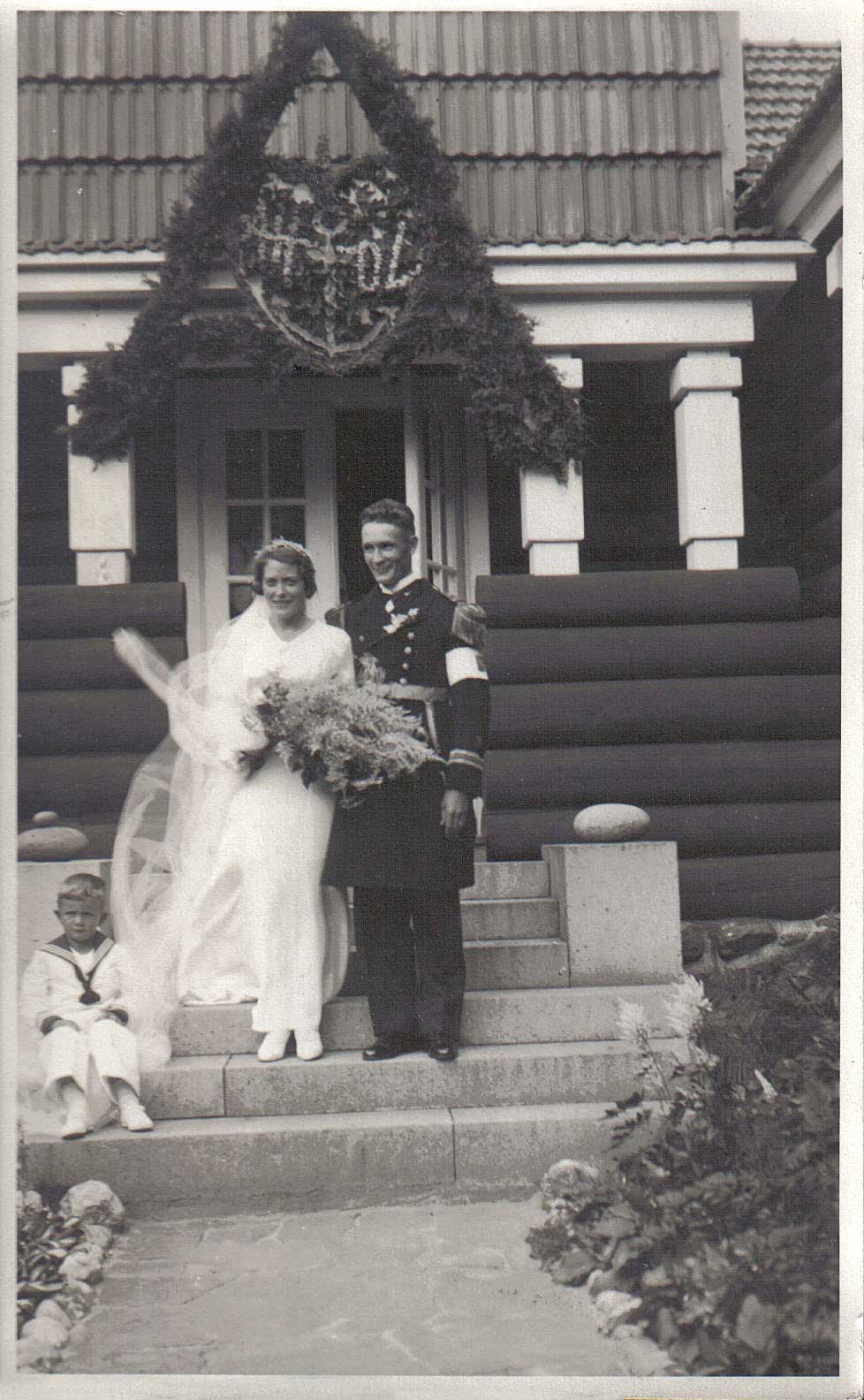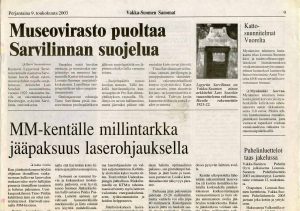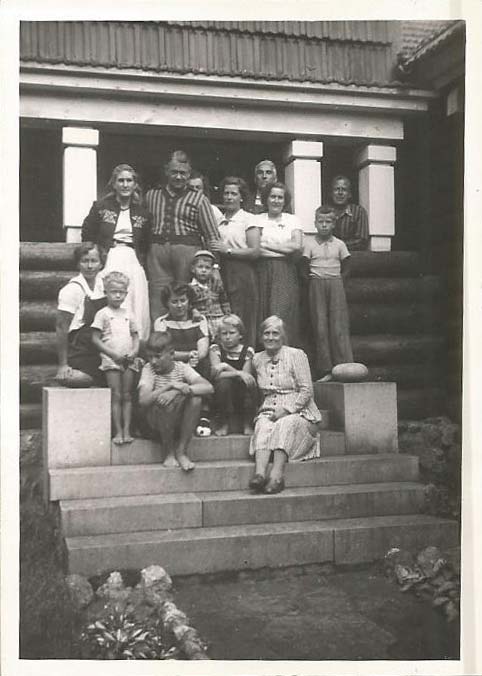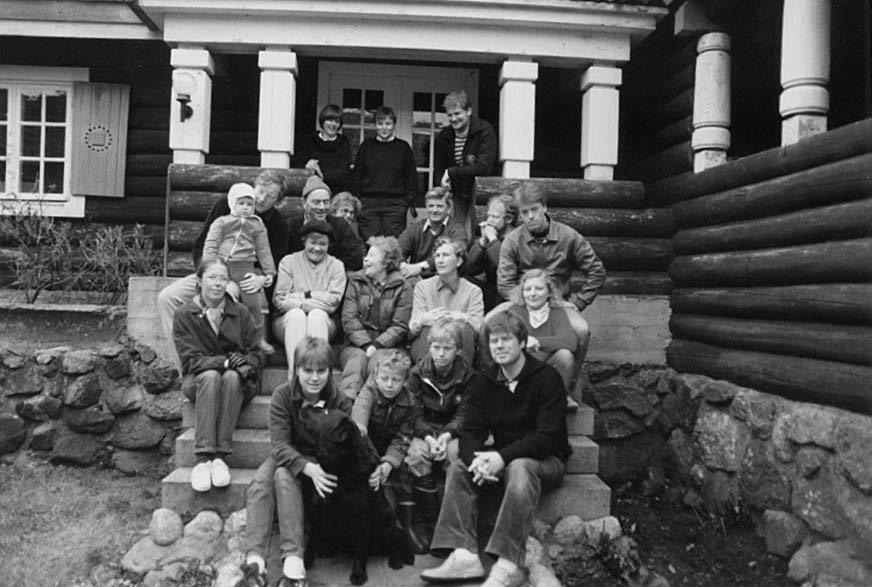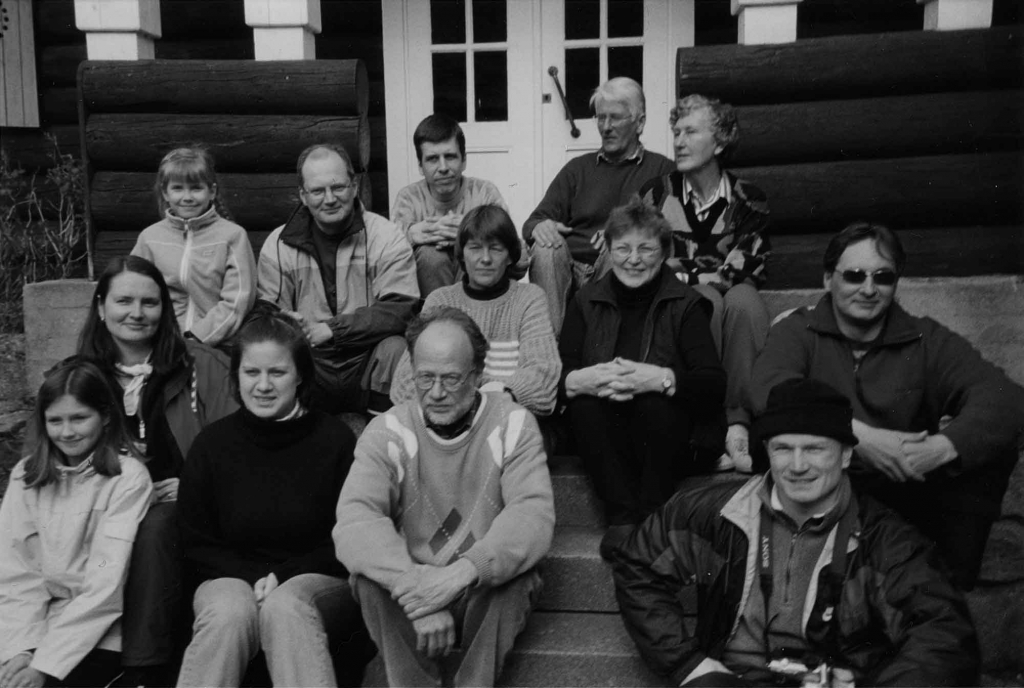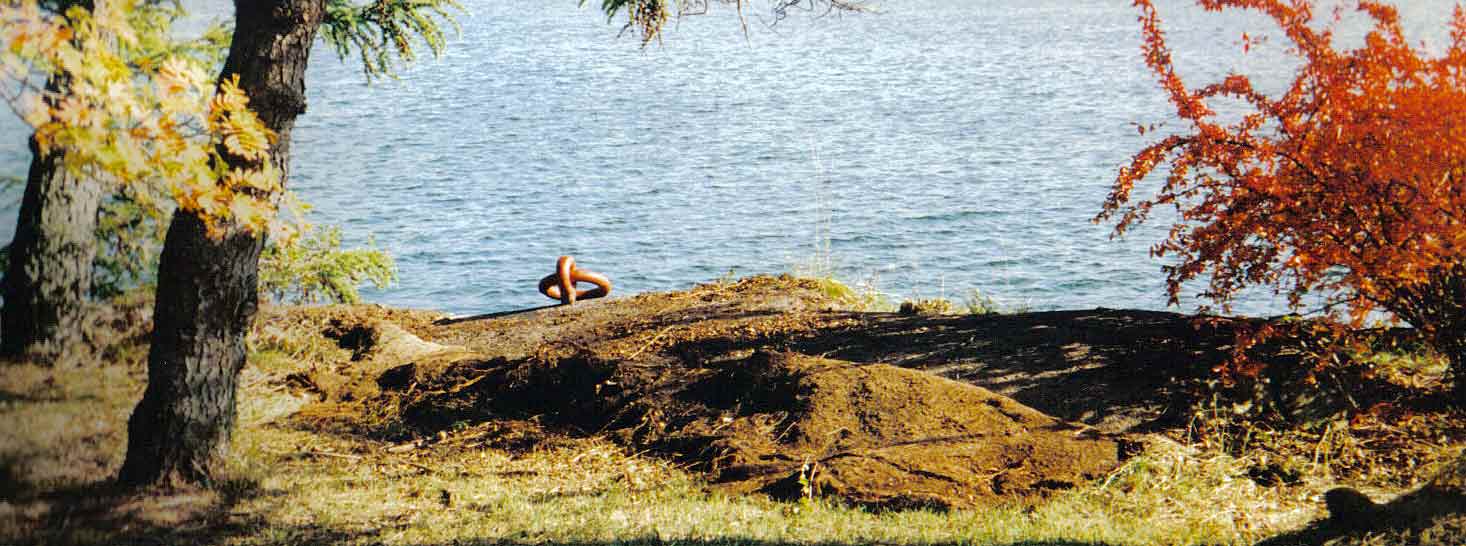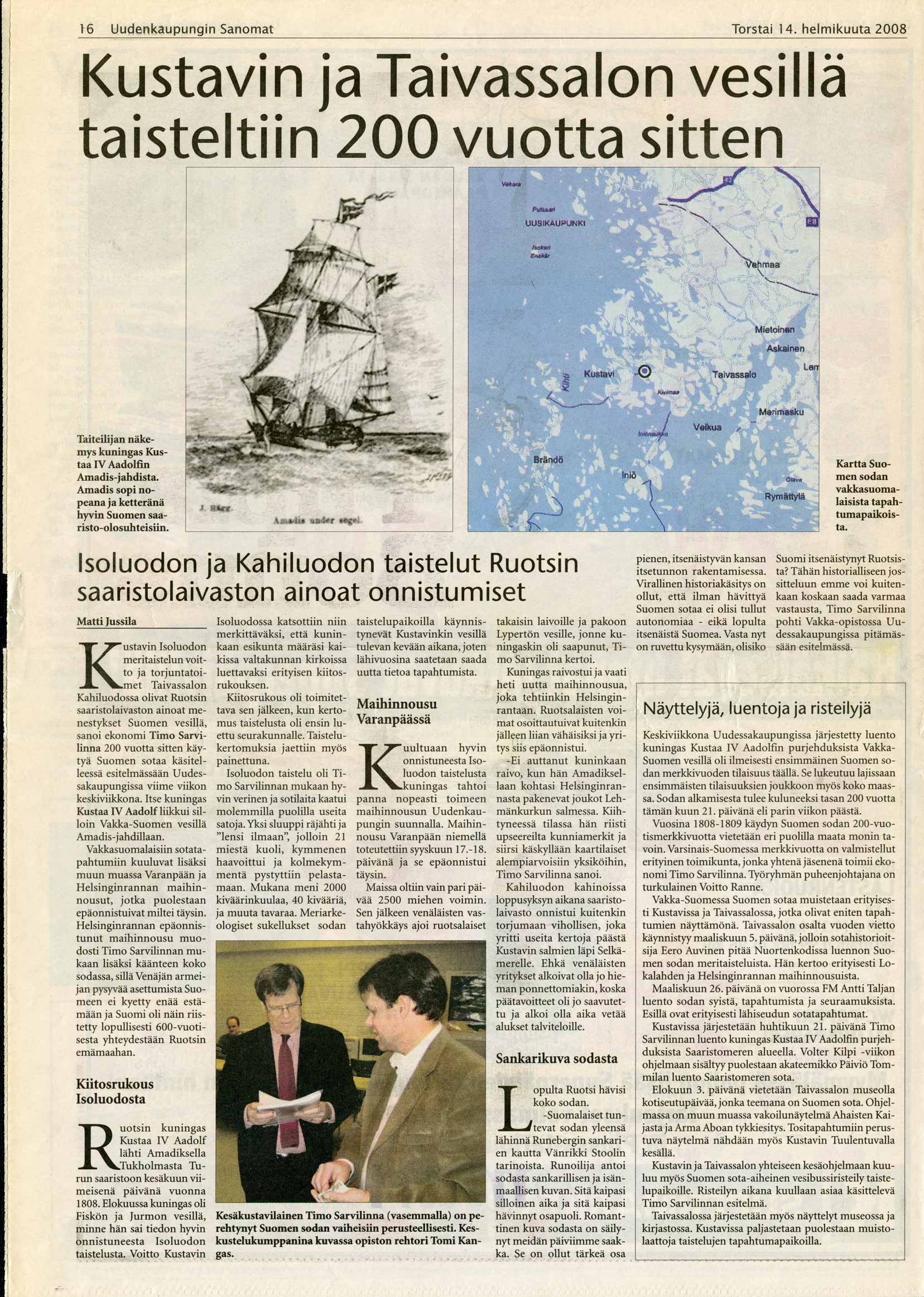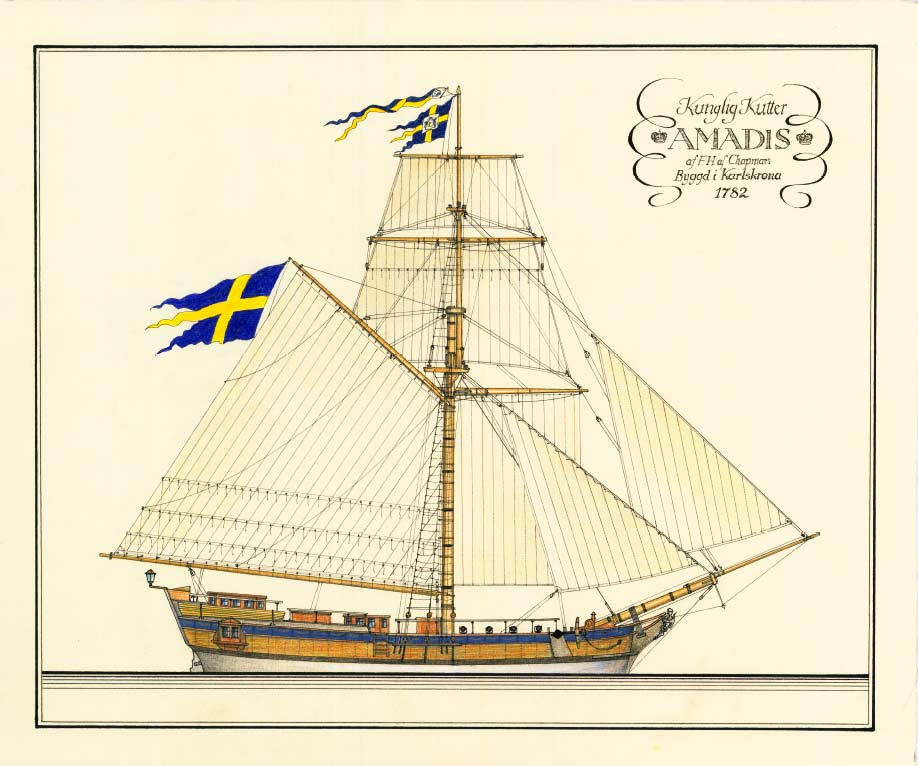
History of the villa
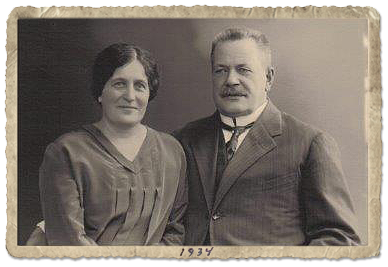
Alarik and Varma Hornborg
Alarik, who served as the City Physician of Pori, and his wife Varma, who made her career in the leadership of the Lotta Svärd Organization, wished to acquire a country house, as was usual for the times. Thus, in the early 1920s Lars designed a log villa for his friend, as they had agreed already in their youthful discussions. Alarik Hornborg designed himself the fireplaces and fixed furnishings of the house, as well as its main interior colouring scheme.
The villa was built between 1920 and 1922, with building materials transported by sea and over the ice. It was no easy task to transport logs to the rocky headland, which is why Alarik sent an urgent message to her wife in Pori: “Buy a horse!” Varma did so, purchasing from the Pori market a horse, Pekka, whose job it was to haul the logs from the shoreline to the building site.
At completion of construction, Alarik Hornborg was 52 years old. That summer, he could already engage a deputy to take care of his duties in Pori, enabling Alarik to dedicate himself to family, friends and gardening. That said, the doctor was a physician also in Lypertö, often the only one within dozens of miles. Many a time the fast smuggling boats from Åland, the best conveyances of the time, fetched doctor “Humpori” to the aid of infants and the infirm.
The large garden represented a lot of work watering and weeding. The family harvested their own vegetables, fruit and berries from the kitchen garden, with tomatoes, cucumbers and other edibles growing in the hothouse. In the summers, a professional gardener and his helpers tended the Sarvilinna garden. Other staff included the cook and the maid; the generator and the motor boat needed a machinist. In all, the Sarvilinna household comprised more than a dozen people.
The doctor’s motor yacht was called “Aorta”
The houses of the village of Lypertö in Kustavi are spread over many islands. Moving around in the archipelago and interaction among the inhabitants would not have been possible without versatile boats and other water transport. Thus also the villa had a “fleet” consisting of the “Aorta” motor yacht, a sailboat, a small boat with a Penta outboard motor and two ruuhi or rowing dinghies.
Aorta was seaworthy also for longer journeys. In 1930 she was taken all the way to Stockholm. The detailed logbook of that journey has been preserved at the villa; the art deco -style drawings that illustrate it are the handiwork of Kyllikki Raustila, a fashion artist for the Stockmann department store, who was along for the journey.

Garden
Alarik Hornborg passed away in 1936; the garden plan in its final form was never completed. The variety of species decreased during the Winter War and the changing times made it impossible to engage professional help to work at the garden. However, the loyal Fanni Niemi remained in Villa Sarvilinna and worked the garden still as late as in the 1960s.
Of the children of Alarik Hornborg, his daughter Aira Lennes (1908–2000) took care of Sarvilinna and its garden for decades, in addition to her work as a dentist. It is to her credit that the Sarvilinna arboretum still exists. According to experts, it is the most complete of the three remaining old arboretums in Finland. Aira Lennes was in excellent health still at 85, with the Sarvilinna garden flourishing. This was due to her untiring work in the garden, from morning till night, from early spring to late in the autumn.

Listed for protection
The buildings of Sarvilinna and the garden and arboretum were listed in 2006 in accordance with the Act on the Protection of Buildings. The intent has been to ensure that this valuable cultural/historical entity is preserved as a whole for future generations. The listing has also provided the basis for valuable co-operation with the Finnish Heritage Agency.
One of the Sarvilinna traditions is the spring work party, where members of the extended family clean, repair and do garden work together. The event is also a communal event, making it possible also for new members of the family to get to know everyone.
The location of the village of Lypertö, at the mouth of an important shipping channel, has directed the development of the maritime industry and sometimes also brought the terror of war very close. When Finland belonged to the Kingdom of Sweden, Lypertö was one of the designated military harbours of the Swedish Archipelago Fleet. An especially noteworthy concentration of military power in Lypertö took place in the summer of 1808. At that time, also King Gustavus IV Adolphus stayed quite long at Lypertö abroad the ship “Amadis”, leading his war government from that location.
Towards the end of the 19th Century, the sailing ships of Lypertö were well known; they have been aptly described in literature by the author Volter Kilpi, especially in his novel “Alastalon salissa” (“The Hall of Alastalo Manor”). Alastalo is a close neighbour to Sarvilinna.
